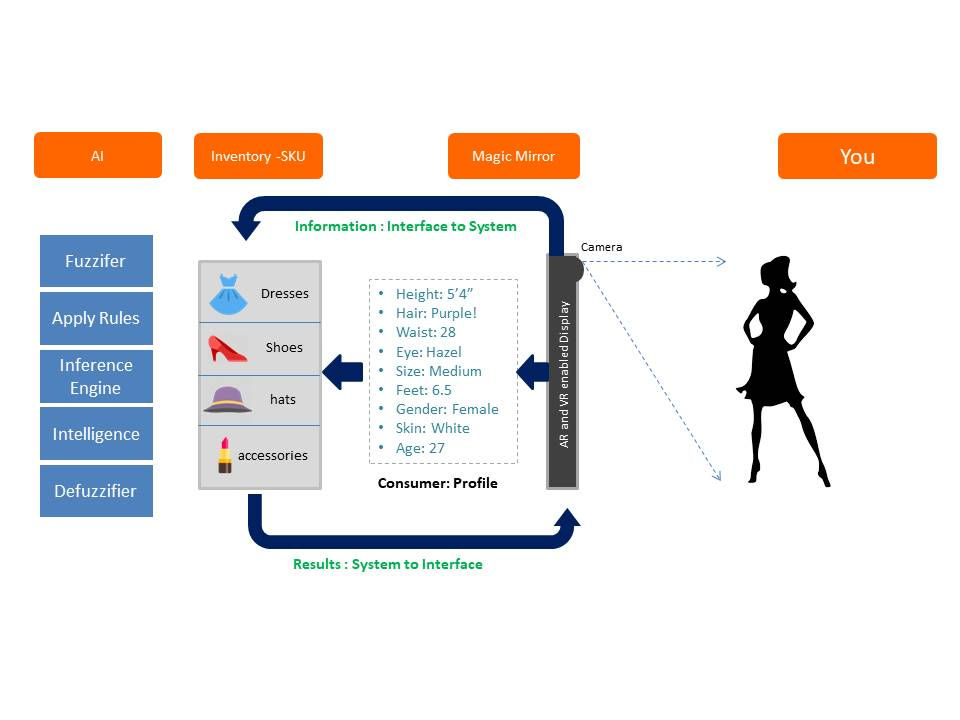Virtual – At your assistance….
- Abhinav Prakash
- Jun 3, 2018
- 3 min read

“Mirror Mirror on the Wall, Who’s the fairest of them all” “Well Karen, if you apply a darker shade of lipstick and try this new green dress, you gonna look just fine!”
Far-fetched? Well, a little perhaps, but certainly not beyond realm of possibility as Virtual Assistants are becoming mainstream. As some of us witnessed the Magic Mirror in Barcelona Mobile Conference-2016, it became manifestly clear that tech companies are serious about creating an interactive, intelligent digital interface to break new grounds in user engagement. It makes sense also, as text centric chat-bots are so ‘last-year’ now!
Before proceeding ahead, ponder over this- How many times have you left a website in frustration, unable to make sense of all the clutter, confusing interfaces and hosts of options? And how often have you spent long time’s minutes on a website trying to look for that one crucial piece of information that was definitely there on your last visit but now you just can’t locate it anymore!
Let’s face it- Not all the users are as tech savvy as we want them to be, nor are all the web and mobile layouts as intuitive as they think they are! And that’s why businesses are turning towards Virtual Assistance. Essentially a virtual assistant is a personalized robotic application that helps a website and/or mobile user to make most out of their visit. You are on the mobile application of a utility company looking for your last month’s electricity bill? Instead of browsing through the entire clumsy menu, you just press talk button, speak out your requirement and that’s it! Your electricity bill is pulled out of the dark dank depths of data archives and delivered smack on your screen!
The idea of Virtual Assistant is neither new (relatively speaking) nor surprising. Since the time Augmented Reality and Artificial Intelligence started to knock doors, all the geeks were toying with idea of a virtual entity that could service needs of an ever growing online community. Predictably one of the earliest movers in this game was online sex-sites who used a combination of CGI, responsive algorithm, and consumer segmentation to deliver the gratification sought by their patrons. Businesses did not waste too much time either to catch up and soon many companies had created their own versions of virtual assistants.
Today we see application of virtual assistance in various consumers –focused and transaction driven applications. E-commerce industries are particularly interested in this technology with an aim to create a more personalized, relevant and engaging shopping experience. E-commerce robots welcome visitor by their name, assist them in browsing catalogs based on their previous purchase patterns, and help make product selection, cross-sell and up sell, take payment, complete purchase and issue a delivery time!
Now with advent of augmented and virtual reality backed by IoT and AI, Virtual assistants are getting ready to step out from online realms and step directly into stores close to you. Magic Mirror, in the beginning of this blog is one step in that direction. So what happens here is you will see big full size mirrors installed across entire store. As you will stand in front of them, they may or may not address you by your name, but the cameras hidden inside the mirror will quickly assess your height, body measurements, eye color, hair type, skin tone and gender. The computing chips inside the mirror process all this data to generate your profile and run it against stores’ inventory to display all the range of products matching to your size- shirts, goggles, shoes, jackets, coats, hats, and briefs. But that’s not it. Now you can touch let’s say a dress, select a color and touch ‘wear’. And the ‘Mirror’ you is suddenly wearing that dress ! Cool, eh! You can repeat the same process for every item in the selection until you find the best evening out fit and the perfect shade of lipstick to go with it!








Comments